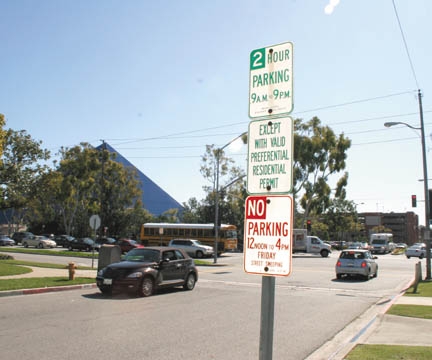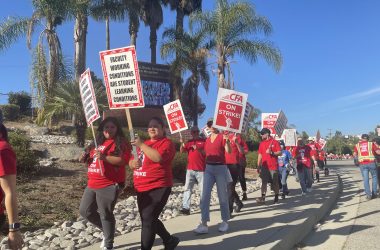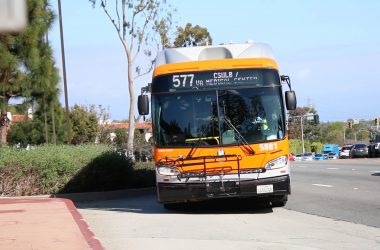While students pay to park on campus, Cal State Long Beach pays to keep students from parking on residential streets close to campus.
Patrick O’Donnell, the fourth district council member of Long Beach, said the university agreed to pay up to $12,000 this year for residents’ preferential parking permits.
According to O’Donnell, the money comes from campus parking citations, and he said he was going to advocate for more money.
Preferential parking — or one- to two-hour parking except with a permit — is enforced on several streets in neighborhoods surrounding the CSULB campus. The annual permits cost $32 each, and households may purchase as many as four. Residents in the Los Altos neighborhood pay $16 for the first two permits and $32 for the second two because of the money from CSULB.
According to Roseman, there are still about 300 permits available at the discounted rate. People who do not live on restricted streets cannot purchase permits.
The local community members who live in the Los Altos neighborhood met Wednesday night with O’Donnell to discuss the issue of students parking on residential streets in the Minnie Gant Elementary School auditorium.
According to O’Donnell, this was an issue brought up at the last community meeting.
“I know you know there’s a problem,” O’Donnell said.
To fix the problem, David Roseman, a city traffic engineer, proposed increasing preferential parking boundaries. This would force students to park further away.
“We’re always guessing how far the student will travel,” Roseman said. “What’s it worth to him?”
When people who live beyond the proposed additions claimed to also have a student-parking problem, Roseman said they would consider expanding the boundaries of preferential parking even more.
Many of the people at the meeting said students parking on residential streets was a serious issue that needs to be addressed quickly. Some complaints from the community include students leaving trash outside their cars, moving garbage cans in order to park, partially blocking driveways and parking uncomfortably close to other cars on the street making it difficult for residents to safely pull out of their parking spot.
One community member said, “You need to get CSULB to make the students park there [on campus].”
Others echoed that sentiment, asking why, if the $123 parking fee is so daunting to students, the university doesn’t include it in tuition so students don’t realize how much they are paying to park. O’Donnell said that state law prohibits the school from charging anything but tuition fees to students.
Some people asked why students have to pay for parking at all, since if it were free students would park on campus and not on the streets. University Police Captain Fernando Solorzano said that the parking fee students pay, pays for the maintenance of the parking facilities on campus. One person asked why the school isn’t the school paying to maintain the neighborhood streets that students park on, if the school is paying to maintain its own parking facilities.
Community members also wanted to know why the school isn’t still encouraging students to park for free at the Marine Lot. Solorzano replied that since Parking Structure 3 has opened, there hasn’t been a need for the Marina Lot. Solorzano also mentioned the school’s alternative transportation programs, including U-Pass and carpool parking spaces. The residents said they still want the school to promote the Marina Lot in an effort to keep students off their streets.
Another proposal was made to include weekends in the preferential parking restrictions to prevent students who live on campus from parking there. Some residents claimed to see students park on neighborhood streets and walk to the residential halls.
While most of those in attendance felt that expanding preferential parking was a good thing, a small minority spoke up for the students. They said that they didn’t feel it was a problem and students should have the right to park on public streets.
Before any change can be made to which streets have preferential parking, Roseman said they need two-thirds of the neighborhood supporting it so they can take it to the council. From there the council will vote on it. If everything goes smoothly, the new restrictions can be set before the fall semester begins.




